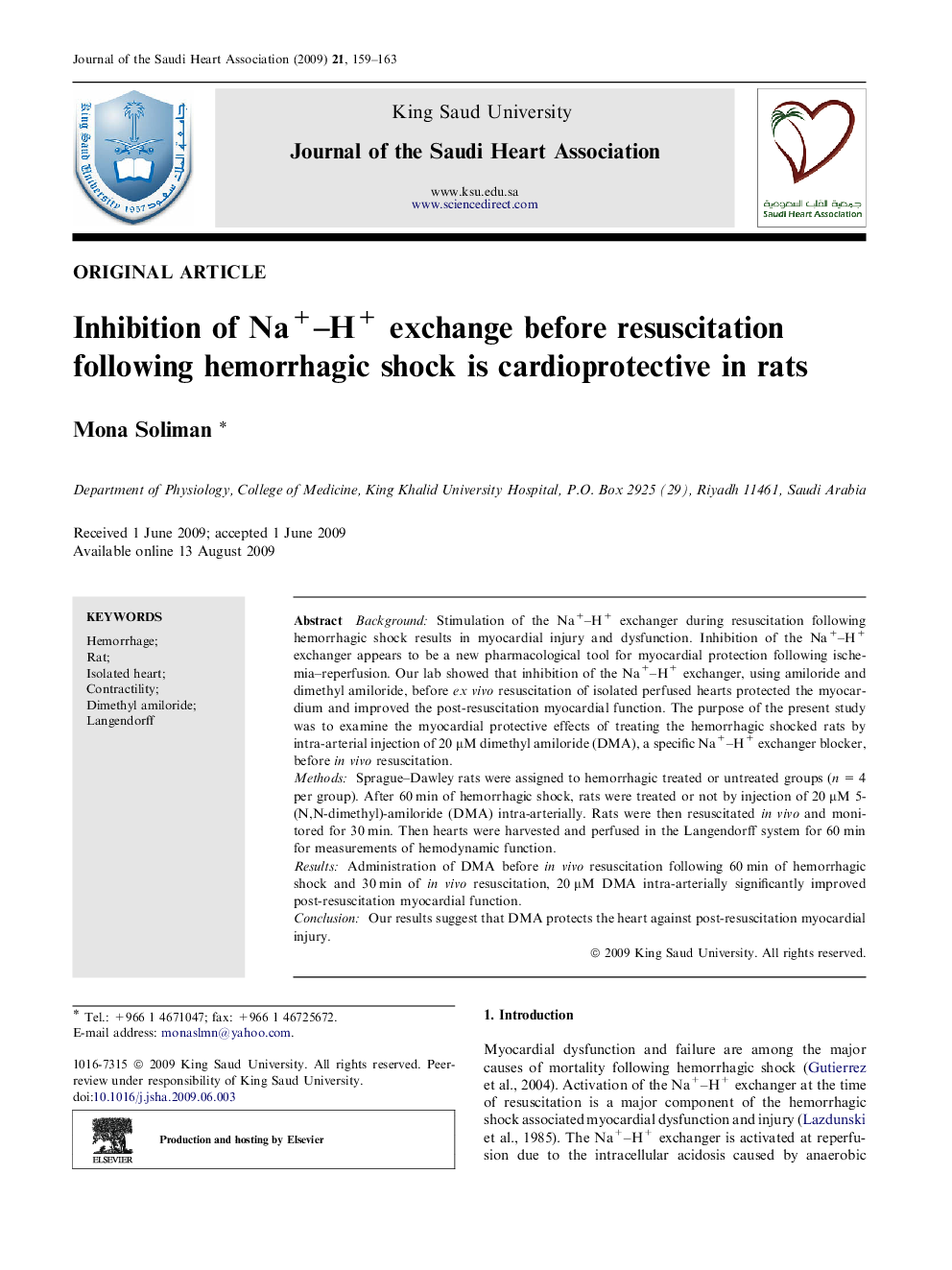| کد مقاله | کد نشریه | سال انتشار | مقاله انگلیسی | نسخه تمام متن |
|---|---|---|---|---|
| 2978101 | 1179516 | 2009 | 5 صفحه PDF | دانلود رایگان |

BackgroundStimulation of the Na+–H+ exchanger during resuscitation following hemorrhagic shock results in myocardial injury and dysfunction. Inhibition of the Na+–H+ exchanger appears to be a new pharmacological tool for myocardial protection following ischemia–reperfusion. Our lab showed that inhibition of the Na+–H+ exchanger, using amiloride and dimethyl amiloride, before ex vivo resuscitation of isolated perfused hearts protected the myocardium and improved the post-resuscitation myocardial function. The purpose of the present study was to examine the myocardial protective effects of treating the hemorrhagic shocked rats by intra-arterial injection of 20 μM dimethyl amiloride (DMA), a specific Na+–H+ exchanger blocker, before in vivo resuscitation.MethodsSprague–Dawley rats were assigned to hemorrhagic treated or untreated groups (n = 4 per group). After 60 min of hemorrhagic shock, rats were treated or not by injection of 20 μM 5-(N,N-dimethyl)-amiloride (DMA) intra-arterially. Rats were then resuscitated in vivo and monitored for 30 min. Then hearts were harvested and perfused in the Langendorff system for 60 min for measurements of hemodynamic function.ResultsAdministration of DMA before in vivo resuscitation following 60 min of hemorrhagic shock and 30 min of in vivo resuscitation, 20 μM DMA intra-arterially significantly improved post-resuscitation myocardial function.ConclusionOur results suggest that DMA protects the heart against post-resuscitation myocardial injury.
Journal: Journal of the Saudi Heart Association - Volume 21, Issue 3, July 2009, Pages 159–163